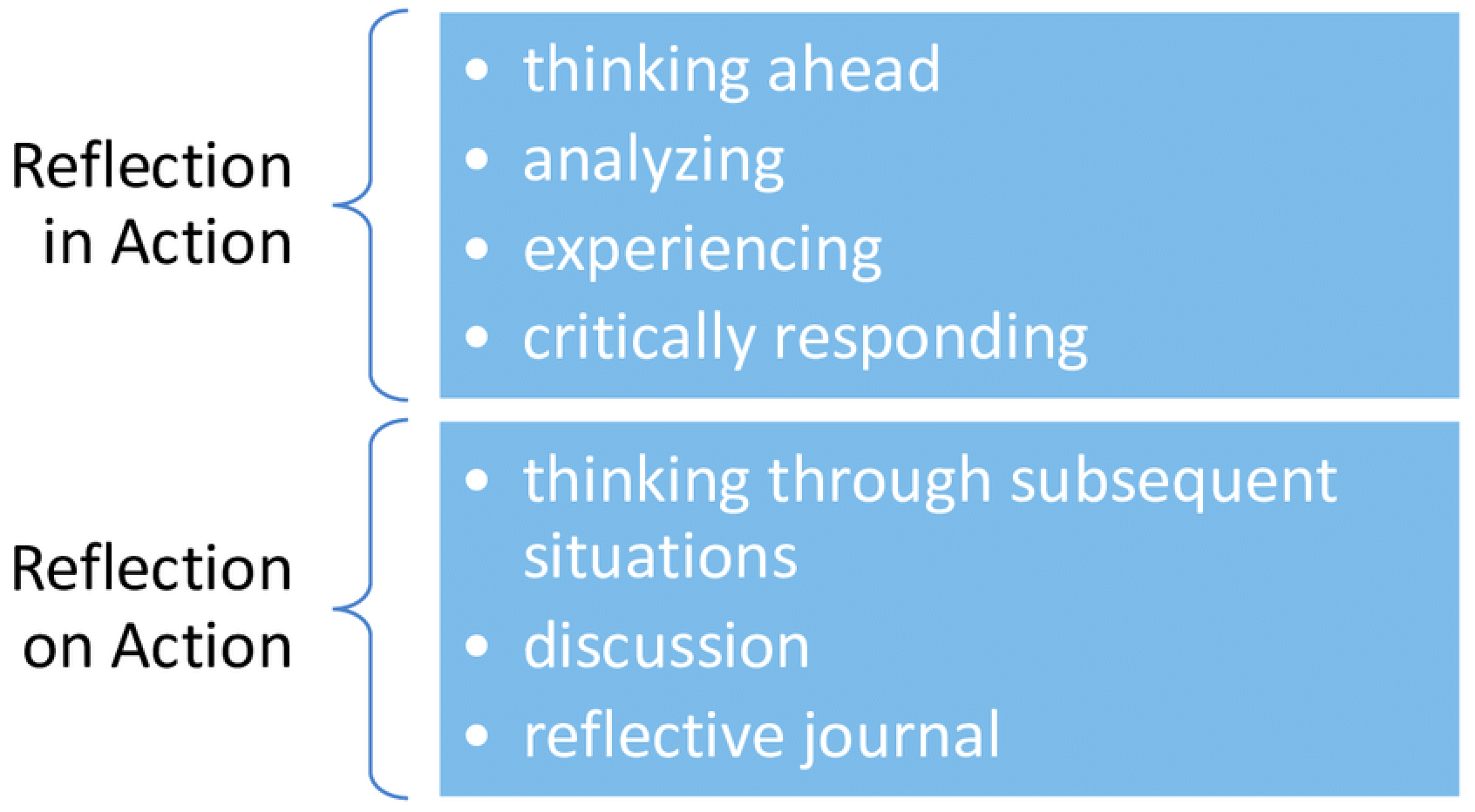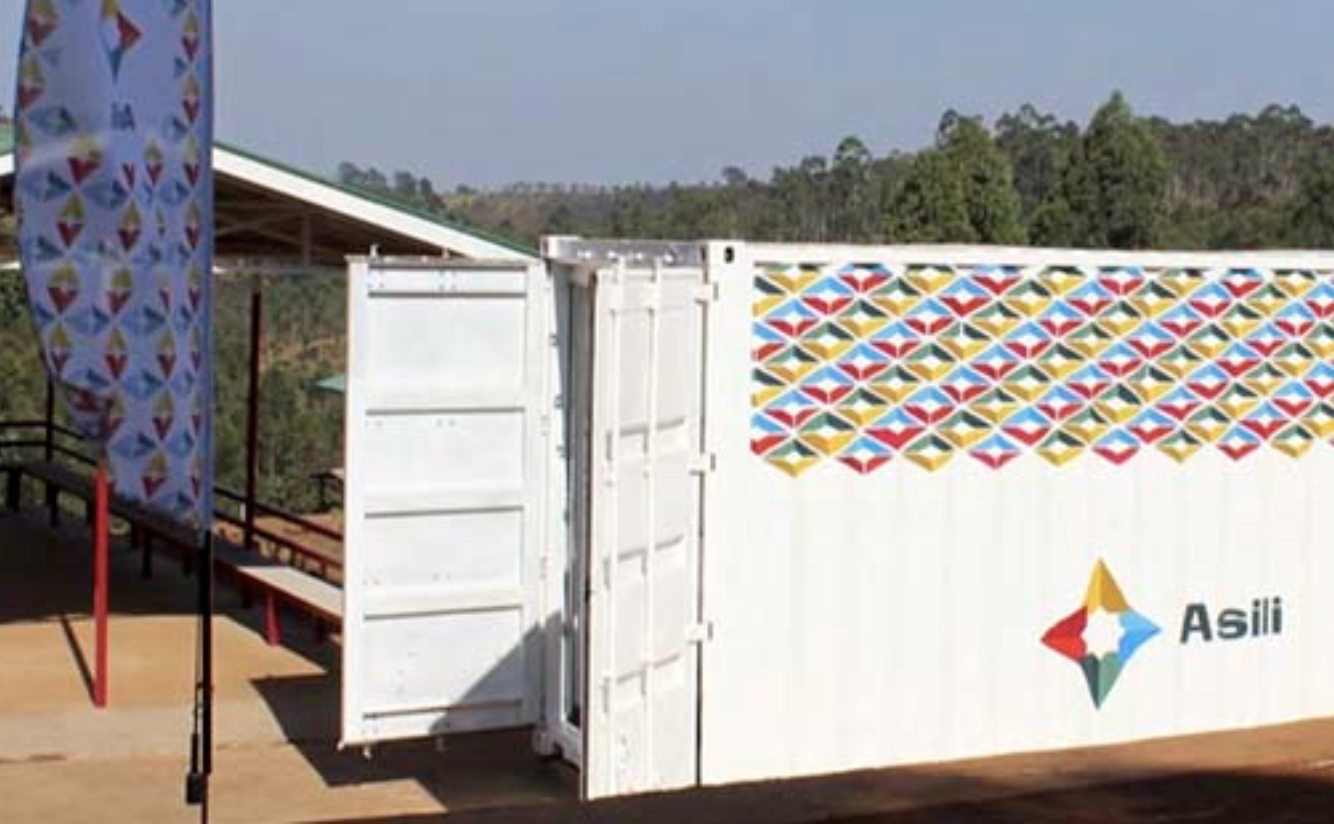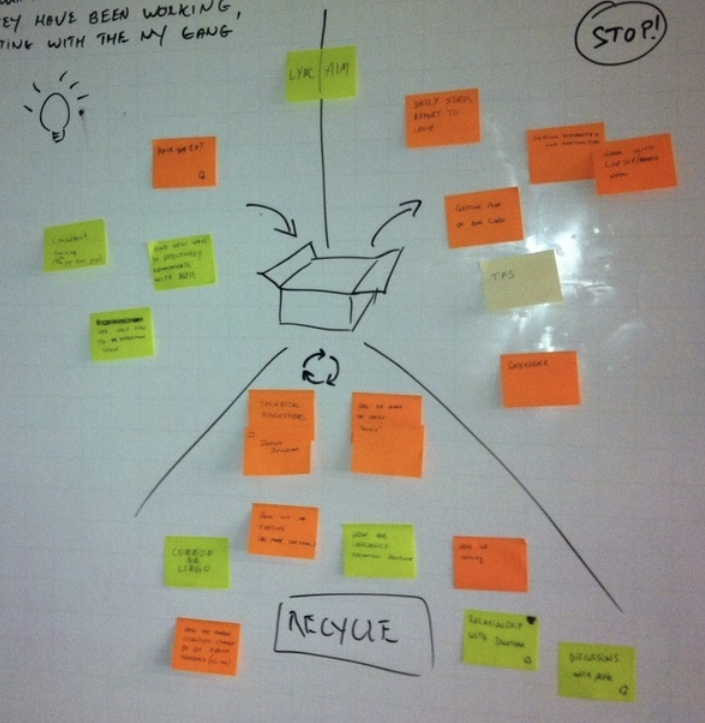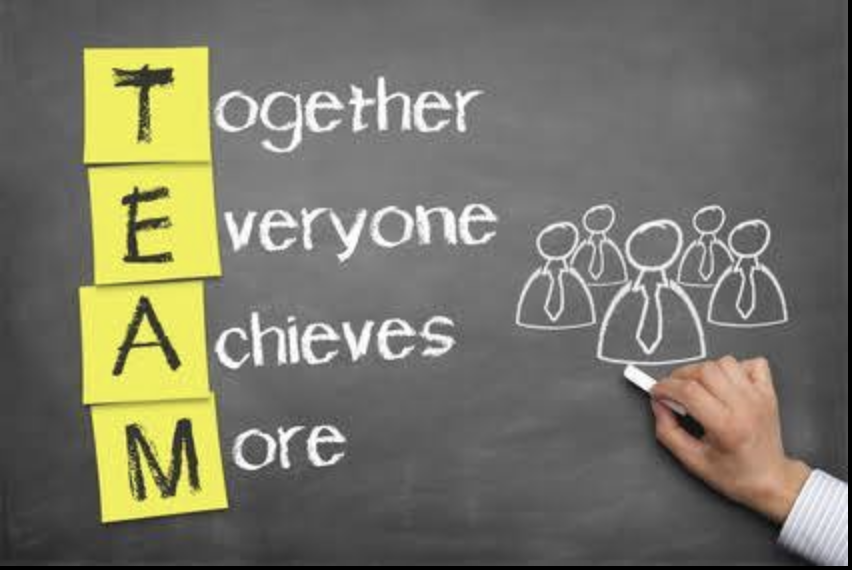3.1 The Design Lifecycle
3.1.7 Reflecting on your Practice: The Post Mortem or Final Reflection Paper
| Teams achievement adds up to more than the sum of the team members' individual contributions |
For many, this is the part of the design process will not be unfamiliar. It is akin to the reflection part of a final assignment. But as this final reflection – or as it is sometimes called, the post mortem – connects both backwards to past practices and forward to new design thinking projects, it is not just a summing up of goals achieved and challenges faced. Rather it should be viewed as an ongoing and formative process of learning, making, and being part of solutions for change.
In many areas of business and industry, it is common after delivering a solution to gather as a team to reflect on the process, on knowledge invested, and new knowledge returned. Teams reflect on their engagement with users and stakeholders, on the decisions and choices made, and on findings and insights chosen to build on (as well as the ones discarded). In short, this report reflects on how the team performed. This is the time to extract learning from the entire process. It is often called a Post Mortem.
 |
|
Donald Schön’s Reflection-in-Action and Reflection-on-Action |
A post mortem references in broad terms the seminal work of Donald Schön on what reflective practices, during and after a process of professional activities, spark reactions, insights and learnings. You may recognise several cognitive and emotional processes involved in the design thinking process in the 'reflection-in-action'. The post mortem is the equivalent to Schön's 'reflection-in-action'.
The post mortem provides valuable insights which are documented in a report or reflective paper (including various media formats) . It is a finalising document that includes not just the data provided in the pitch, but also more in-depth reflections on what theoretical contexts underpinning the design process, the deep dives undertaken, the historical source material and case studies consulted, as well as anything else that provided inspiration. Individual team member may work on different perspectives, but you should agree as a team on the point of departure for individual contributions as well as how to re-integrate these into the collective memory and knowledge of the team.
And, however invigorating the final reflection may be experienced, a significant outcome of the process is that it becomes a point of departure for a new design thinking cycle. Your reflections will offer refinement as well as new pathways for problem solving. Most of all, use your reflection to celebrate the design process as a practicum in working across disciplines and sectors, with various users and stakeholders who presented diverse and sometimes conflicting values and contexts. Reflect on how this process engaged your collective capacity of cognitive and affective powers. And celebrate you team.
As a small framework for putting your team perspectives into writing a reflection paper – for a blogpost or an introduction to a sample of documentation and data from your project, read the IDEO impact-case study on Asili and how IDEO, ARC (The American Refugee Committee) and a user community co-designed a sustainable business offering agricultural services, clean water, and a health clinic to communities in the Democratic Republic of the Congo.
 |
|
The IDEO and ARC Asili Project |
Sit down as a team with your pitch material on the table or screen, each team member having selected her favorite design phase and element. Start by presenting these elements to each other, while pointing out the impact on the pitch material. Move on to your project reflection drawing on inspiration from Paolo Caroli and Taina Caitano's FunRetrospectives; in which you'll find a number of reflection tools.
We would recommend to take the time to do the Open the Box retrospective exercise, where the team open the design process box of activities and put the into one of three areas: great new activities to add; activities to keep and recycled into the next project, and activities to remove from the box.
 > > |
|
FunRetrospectives Open the Box Reflection |
The Open the Box or another tool from FunRetrospective will help guide you in your reflection processes and to understand how a Post Mortem works.
References
- Linda Candy: The Creative Reflective Practitioner, Routledge 2019
- Paulo Caroli and Taina Caitano: FunRetrospectives
- John Dewey: How We Think, D.C. Heath & Co, 1910
- Donald Schön: The Reflective Practitioner, Basic Books 1983/li>


